This is the second part of my first major series titled The History of Video Game Consoles. If you want to see the first part of the series click here. Anyway, In this part of the series we will go over the major consoles and companies of the second ever console generation. In this generation the industry rose to fantastic heights and also fell to its almost doom.
The Major Second Generation Consoles
The Fairchild Channel F (1976)
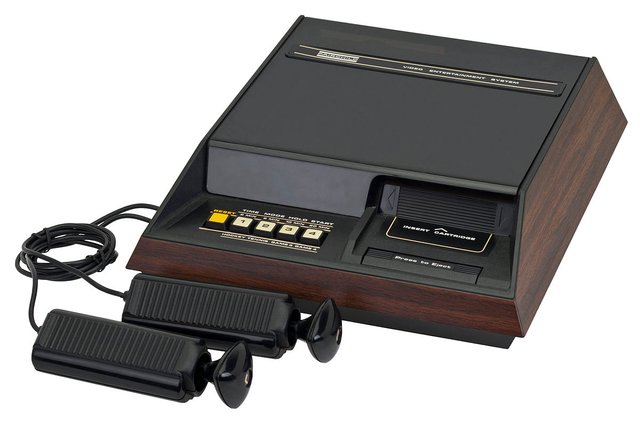
The video game industry was growing with more home consoles popping up and a lot of money being made. This lead to many tech companies that have nothing to do with video games wanting a piece of the future. So, the company Fairchild Semiconductor decided to make their own video game console called the Channel F.
Jerry Lawson designed the F8 CPU which was very complex for the time. This CPU had the most inputs and outputs of any chip at the time. This processor was revolutionary for consoles because it allowed for the first player vs. AI matches ever. This was the first console where the player can play against the computer. Another interesting feature of this console was the hold button, which is essentially a pause button where you can pause the game and also change the speed of the game.
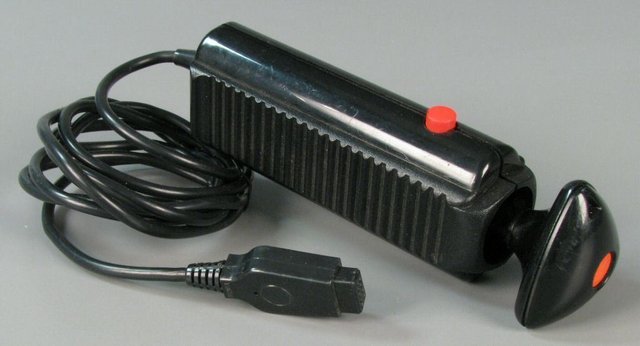
The controllers on the Channel F are a bit weird. The Channel F offered some of the first detachable controllers for a video game console. The controllers were joysticks that didn't have a base. The controller had all the same movement as a normal joystick. Additionally, if you turned the triangle top of the controller it acted as a knob and if you pressed down on the stick it acted as a button. These controllers are very functional and are probably the best controllers for this console generation.
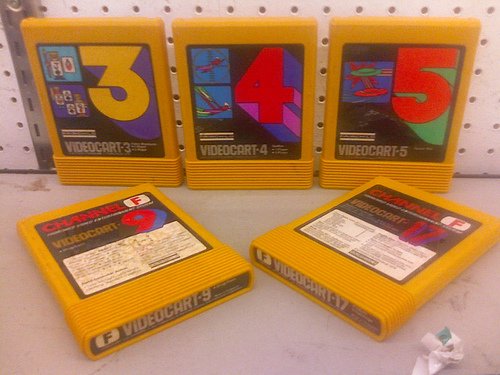
The Channel F was one of the first cartridge playing video game consoles. They released 26 cartridges released some with multiple games on them. Fairchild's only console is known for scaring Atari into cartridge consoles. Atari was frightened by the Channel 1 so they made their own console to compete with it.
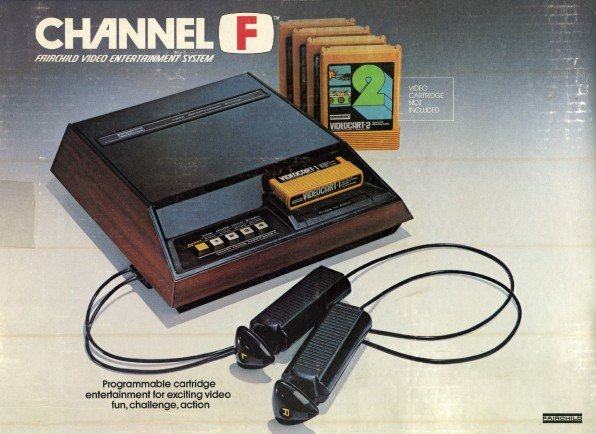
In the end the system only sold 250,000 units in its 7 year life span. Overall it was a really great console, even though it didn't sell. On the bright side, it did influence a company to make one of the most successful consoles of all time. Fairchild sold the rights to the Channel F to Zircon in 1979.
The Atari 2600 (1977)
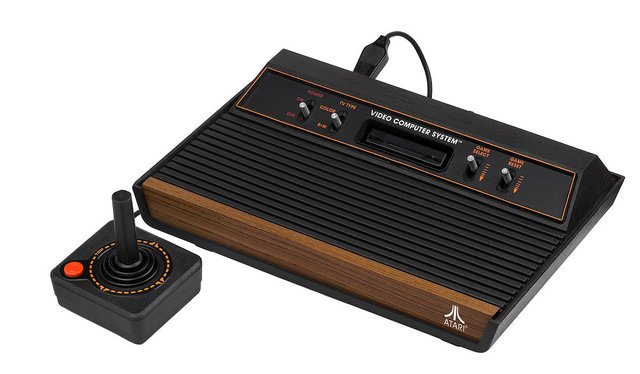
The world was sick of Pong and Pong clones and Atari noticed this. They were frightened by the Fairchild Channel F and made a console to serve the same purpose. Atari came out with the Atari 2600 which was very similar to the Channel F.
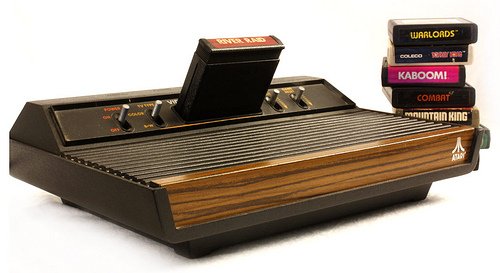
The Atari 2600 was a CPU driven machine and it used the famous 8-bit MOS 6507 processor. This was different from most previous consoles that only allowed a few games to fit in the machine. This processor allowed for multiple games to played via cartridge. Again, like the Channel F it allowed for the player to play against the computer which was revolutionary.
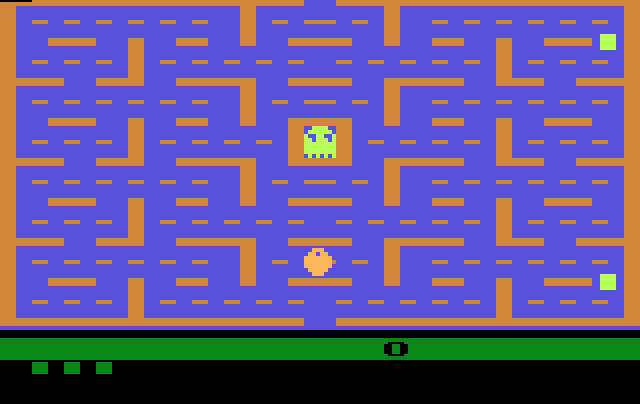
The controllers were more simple than those of the channel F. The Atari's controllers were just a standard joystick and a button. There was also separate paddle controllers which were mainly used for games like pong. There was also a keypad controller, a Driving Controller, and a Trak-Ball controller, but these controllers were all sold separately .
The 2600 had at total of 470 games released for it. A lot of the games were pure garbage because it was the first time 3rd party developers made games for a console and Atari could not stop what was being made for their system. But a lot of these 3rd party games were great too. The biggest 3rd party studio to come out of this time period was Activision. The most classic Atari 2600 games include Space Invaders, Pac-Man, Missile Command, Frogger, and so many more.
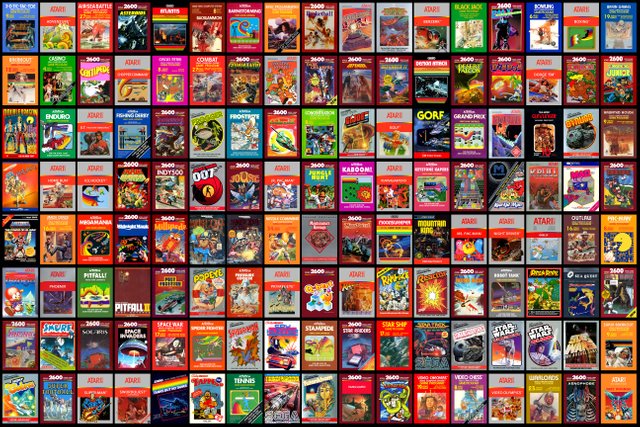
The Atari 2600 wasn't just successful it was extremely successful. Atari sold a total of 30 million Atari 2600 consoles before they discontinued it in 1992. The console is considered by many to be the first big time video game console ever. It certainly has a decorated library of classic games. This console was the driving force of the video game industry for a long time.
Mattel Intellivision (1980)
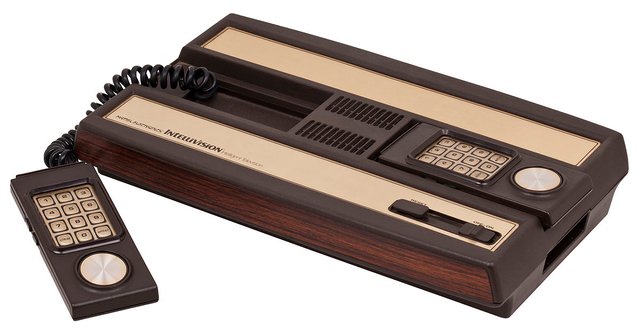
In 1980 Mattel Electronics tried to give the Atari 2600 a run for their money. The Intellivision was more powerful and had better graphics and sounds than the Atari. Their whole marketing strategy was comparing the two consoles in order to show how much better the Intellivision was over the Atari.
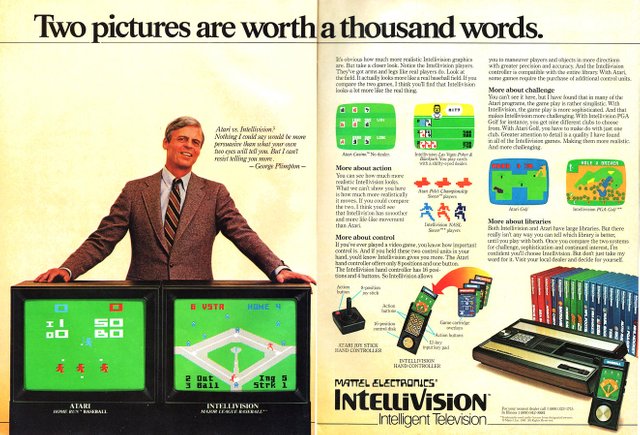
The Intellivision made it easy for developers to make games because of its 4k of ROM containing the Exec Software. A total of 19 games were released before the holiday season of 1980. Then in 1981 they expanded to a total of 35 cartridges beacause of the success they were having. Eventually 3rd party game developers started making games for both the Atari and Intellivision. Even other console competitors like Atari and Coleco were making games for the Intellivision. The Intellivision had a total of 123 games released for it the most classic of those being Astrosmash, NFL Football, Major League Baseball, Burger-Time, Shark! Shark! and other games.
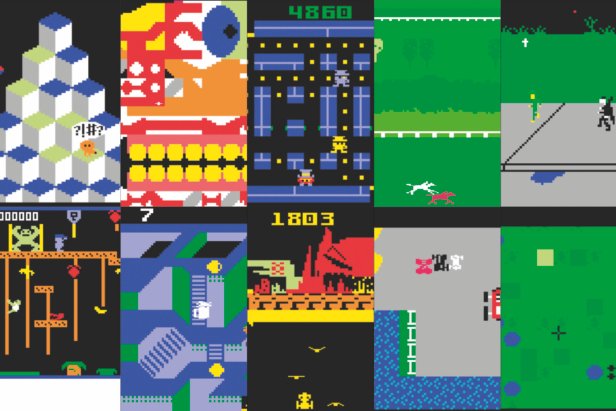
The controllers had a very interesting design. There was a keypad that took up most of the space on the controller and a circle paddle that could detect 16 directions. I thought this was kind of a cool idea each game came with overlays to put on the controller to help the player learn the controls. This controller wasn't the best because it was difficult to use the keypad and paddle disc at the same time.
The Intellivision was very successful for Mattel in its first full year of production in 1981 it sold 1 million units. In 1982 it sold 2 million units but then in 1983 came the Crash. I will talk about the Video Game Crash of 1983 later on, but I will just tell you that it killed the Intellivision's sales completely. Mattel sold the rights to the Intellivision to INTV who continued to make games for it until 1991.
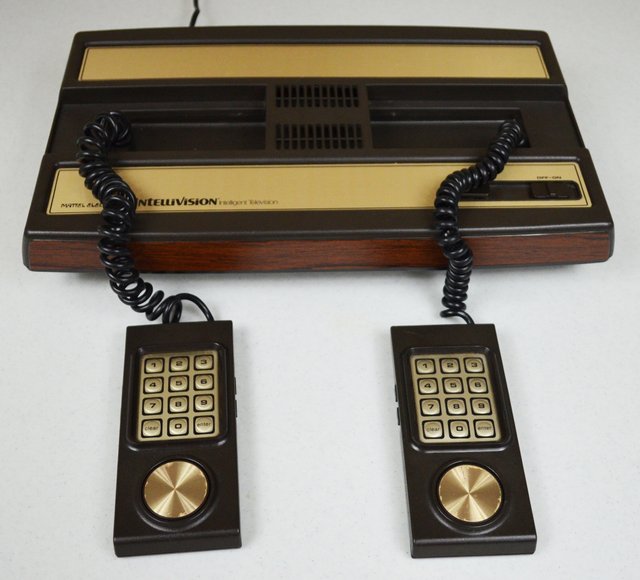
The Intellivision was a better machine than the Atari 2600 and was Atari's closest competitor. The Intellivision sold 3 million units in its few years and did come out with some classic games but the Atari still sold more consoles and had more games. Mattel made a fantastic console, but in the time the console's brand was building the Crash killed it. I think if it was not for the 1983 video game crash the Intellivision could have been a closer competitor to the 2600.
ColecoVision (1982)
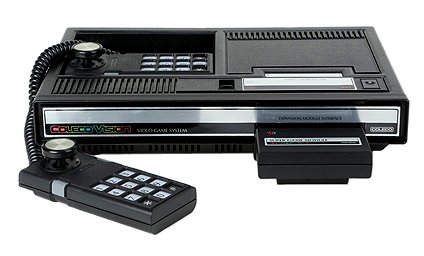
The ColecoVision's goal was to offer a similar experience to actual arcade machines. It was supposed to compete with the unsuccessful Atari 5200 but in reality it competed with the still going strong Atari 2600. The ColecoVision was a more powerful machine than the 2600 but that didn't stop the Atari from selling.
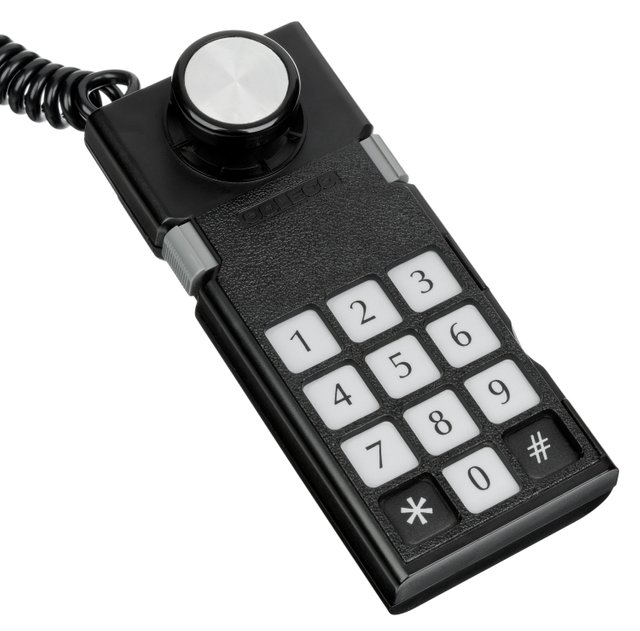
The ColecoVision's controllers are very similar to that of Mattel's Intellivision. It has a number pad and a circular joystick above the number pad. The controller worked just as bad as the Intellivision's controller. It was not easy to use the number pad and the joystick at the same time. These types of controllers are just not good for gaming period.
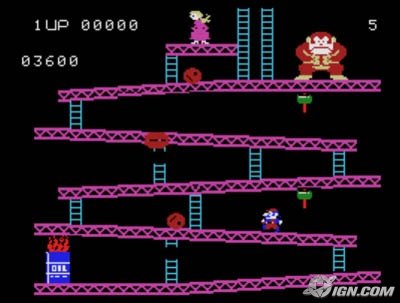
The ColecoVision console always came with a copy of Nintendo's famous arcade game Donkey Kong. Most games for the ColecoVision were arcade games not licensed by Atari. The ColecoVision's total game library included 129 games. That is not including the Atari 2600 games you could play on the ColecoVision. Thats right, Coleco made a console that is backwards compatible with their competitors console. So you can play all Atari 2600 games and ColecoVision games on the same console, that is pretty cool.
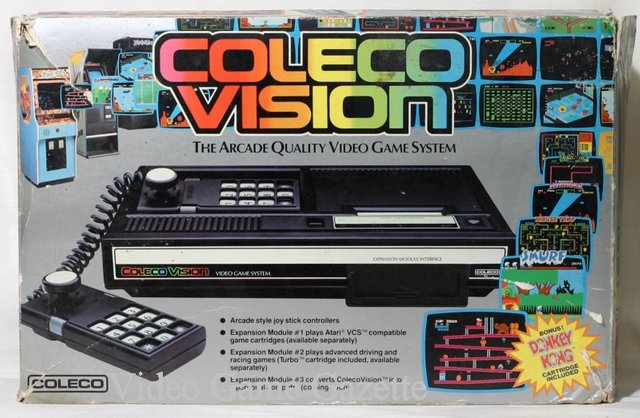
I bet you could have guessed that the ColecoVision got out sold by the Atari 2600. The ColecoVision sold 1 million units in the beginning of 1983. Just like the Intellivision the Video game Crash of 83 ruined the sales of this console. The console was discontinued in 1985 when Coleco decided to start to downscale their video game division. They sold a total of 2 million ColecoVision consoles.
The Video Game Crash of 1983
The video game crash of 1983 left gave the video game industry with a huge black eye. There were dozens of console choices in the early 80's people didn't know which ones to buy or couldn't tell the difference between them because a lot of them were clones.
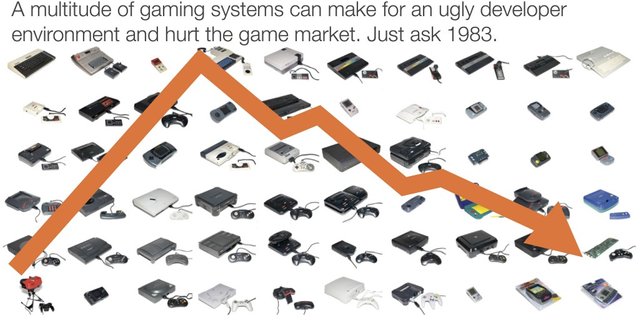
Another reason this crash happened was because of 3rd party developers. 3rd party developers didn't exist until programmers were sick of working for console companies like Atari and not getting any credit. So companies like Activision formed and began making games on their own. This in the end was a good thing but there was no control in the beginning. Everyone was making video games and most were complete garbage. The problem was back then developers didn't need the company of the console to approve the game or publish their games. So this opened the flood gates of shitty games which discouraged consumers from playing video games.
 The final reason this crash happened was because of the rise of computers. Computers were way more powerful than these consoles and could do way more than just play video games. This led people away from the console market allowing it to almost die.
The final reason this crash happened was because of the rise of computers. Computers were way more powerful than these consoles and could do way more than just play video games. This led people away from the console market allowing it to almost die.
Who Won the Second Generation Console War?
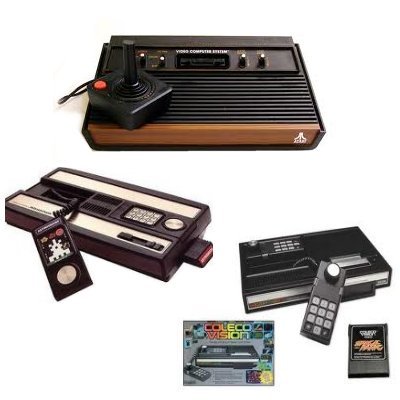
The Atari 2600 won this console war easily. Once the console was released the sales took off and they never really went down except when the crash hit. Another reason why Atari 2600 is king of the Second Generation is because this console actually survived the crash. It also has the biggest legacy out of all of the console from this time period. It is remembered and always will be remembered for its simple design and large library of classic games.
please Upvote and Follow for the next part in the Series and for other Video Game Content @jpperc
Part 1 - It All Started With A Box
Sources:
http://www.gamesradar.com/best-atari-2600-games-all-time/
https://www.giantbomb.com/colecovision/3045-47/
http://videogamecritic.com/intel.htm?ex=1
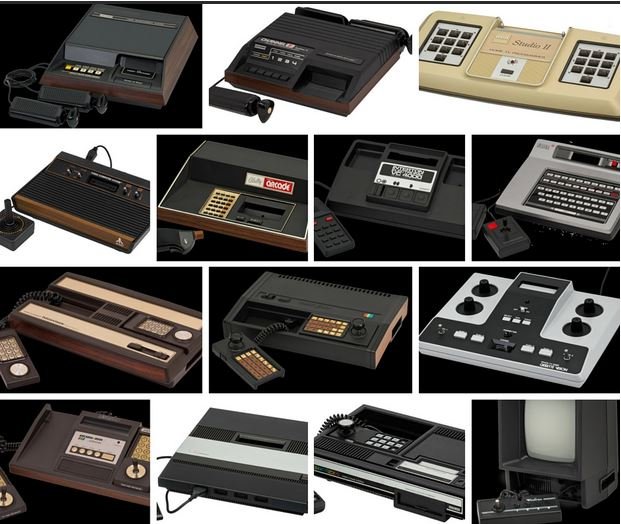
Love this post. Had a 2600 when I was about 10 and never turned back - after that I upgraded to a commodore 64 - proving your point above. Man how things have changed since then.
Downvoting a post can decrease pending rewards and make it less visible. Common reasons:
Submit
Yeah things are way different now and Technology has advanced so so so much since the time of the 2600 its crazy
Downvoting a post can decrease pending rewards and make it less visible. Common reasons:
Submit